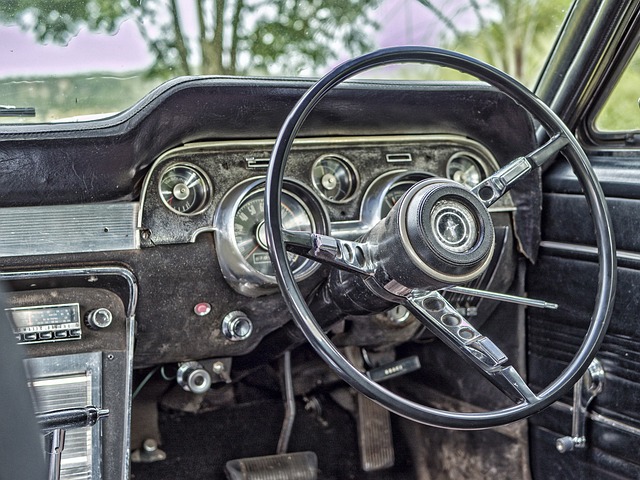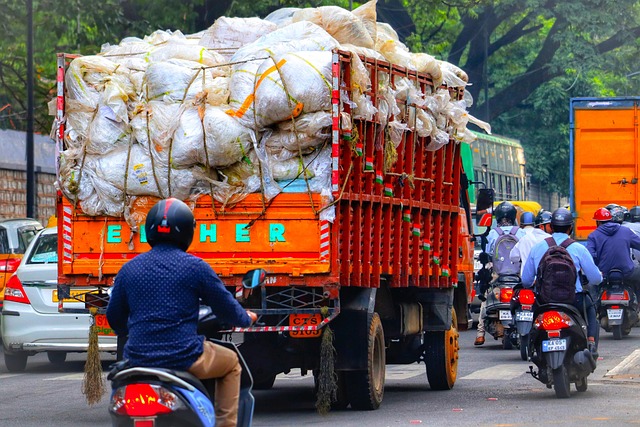Looking to register your car in California? This comprehensive guide walks you through the entire process, ensuring a smooth experience. From understanding eligibility requirements for car registration in California to gathering essential documents for DMV VIN verification, we’ve got you covered. Learn how to prepare your vehicle for inspection and complete the DMV registration steps. Additionally, discover post-registration tasks like insurance, tags, and ongoing maintenance.
- Understand Eligibility Requirements for Car Registration in California
- Gather Necessary Documents for DMV VIN Verification
- Prepare Your Vehicle for Inspection and Registration
- Complete the DMV Registration Process: Step-by-Step Guide
- Post-Registration Tasks: Insurance, Tags, and Ongoing Maintenance
Understand Eligibility Requirements for Car Registration in California

Before registering your car in California, it’s crucial to understand the eligibility requirements set by the Department of Motor Vehicles (DMV). To begin with, your vehicle must be legally imported and comply with safety standards. All cars must undergo a DMV vin verification process, which includes a comprehensive inspection to ensure the vehicle’s identity and condition. This typically involves checking the Vehicle Identification Number (VIN) for any discrepancies or signs of tampering.
Additionally, you’ll need proof of ownership, insurance, and identification. For out-of-state residents, a mobile vin inspection or verification service might be an option to streamline the process. These services provide convenient, on-demand assessments, allowing you to bypass potential delays at DMV offices. Always ensure your vehicle meets California’s emission standards for a seamless registration experience.
Gather Necessary Documents for DMV VIN Verification

Before heading to the California Department of Motor Vehicles (DMV), ensure you have all the essential documents for a smooth dmv vin verification process. This includes the vehicle’s registration, proof of insurance, and your driver’s license or state ID. Additionally, gather the most recent vehicle title, which is crucial for establishing ownership. For classic cars or vehicles with a history, consider bringing along any documentation related to previous ownership changes and maintenance records.
For convenience, many opt for mobile vin inspection services that can verify your vehicle’s information on-site, saving you a trip to the DMV. This method involves professional examiners who use advanced tools to cross-reference your vehicle identification number (VIN) with manufacturer data, ensuring accuracy. Alternatively, some services offer document review and vin inspection for those unable to visit a DMV office.
Prepare Your Vehicle for Inspection and Registration

Before you can register your car in California, it’s crucial to prepare your vehicle for the necessary inspections. This process involves ensuring that all safety and environmental standards are met, which is typically assessed through a DMV (Department of Motor Vehicles) vin verification. During this inspection, the vehicle identification number (VIN) is cross-referenced with state records to check for any discrepancies or outstanding issues.
One efficient way to streamline this process is by utilizing a mobile vin inspection service. A mobile vin verifier can conveniently come to your location to conduct the VIN inspection. This saves you time and effort, as you won’t need to visit a DMV office. With just a few details from your vehicle registration and insurance papers, a professional can perform a thorough check, confirming that your car is ready for registration in California.
Complete the DMV Registration Process: Step-by-Step Guide

To complete the DMV registration process in California, start by gathering all necessary documents. This typically includes your vehicle’s registration certificate from the previous state, proof of insurance, and a valid driver’s license. Next, visit your local DMV office or use their online services to initiate the registration. You’ll need to provide detailed information about your vehicle, including its make, model, year, and unique Vehicle Identification Number (VIN). The DMV will conduct a VIN verification to ensure the vehicle’s history is clean and matches the details provided.
For convenience, many drivers opt for a mobile vin inspection or use a mobile vin verifier service. These options allow you to complete the VIN verification process remotely, saving time and effort. Once your vehicle’s history checks out, you can proceed with payment for the registration fee. Be sure to double-check all entered information before finalizing the transaction. After successful completion, you’ll receive your new California vehicle registration documents in the mail within a specified timeframe.
Post-Registration Tasks: Insurance, Tags, and Ongoing Maintenance

After successfully registering your car with the California DMV, there are a few key tasks to complete to ensure your vehicle is legally compliant and safe on the road. First and foremost, obtain insurance coverage for your vehicle. California law requires all vehicles to be insured, so this step is non-negotiable. You can choose from various types of auto insurance plans tailored to your needs and budget.
Additionally, you’ll need to acquire license plates (tags) for your car, which are essential for identifying your vehicle and paying road usage fees. The DMV will guide you through the process of selecting appropriate tags and installing them on your vehicle. Regular maintenance is another crucial aspect, including scheduling timely inspections and ensuring your car passes emissions tests when required. Consider using a mobile vin verifier for convenience in these checks, as it allows for efficient verification of your vehicle’s history, including VIN inspection, right from your smartphone.
Registering a car in California involves several steps, from understanding eligibility requirements to completing the DMV VIN verification process. By gathering all necessary documents, preparing your vehicle for inspection, and following the step-by-step registration guide, you can ensure a smooth transition into California’s vehicular landscape. Remember to prioritize post-registration tasks like insurance, tags, and ongoing maintenance to keep your vehicle legally compliant and safely on the roads.
